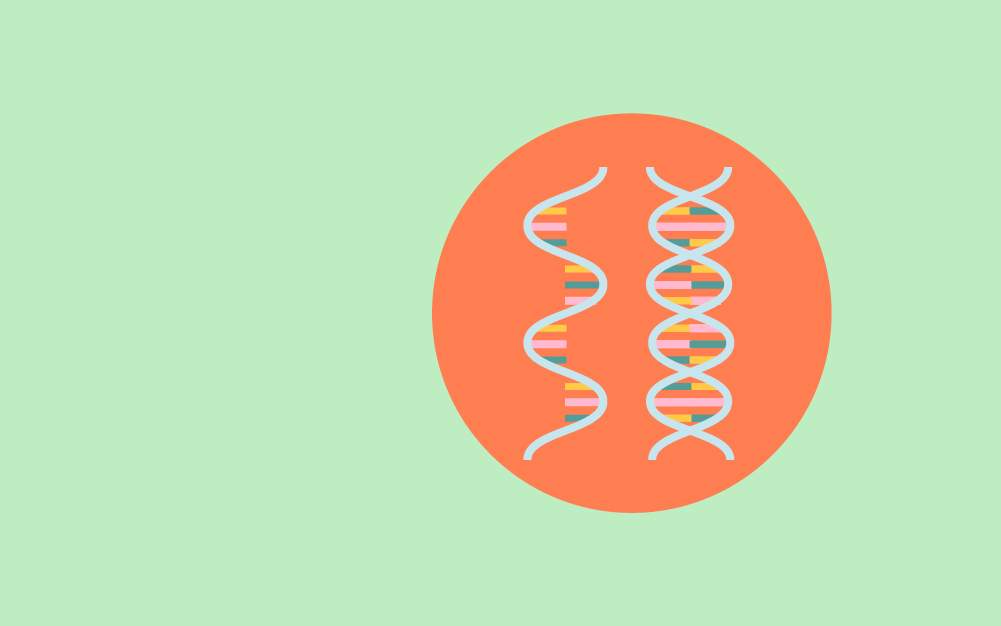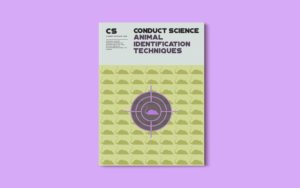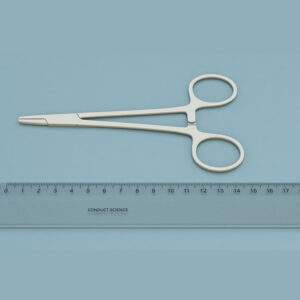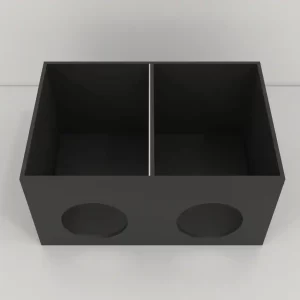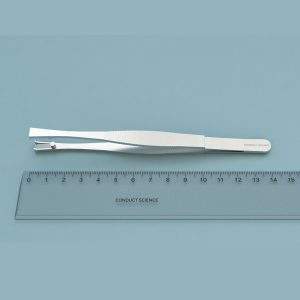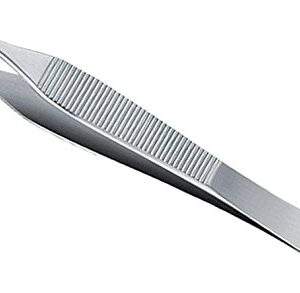Introduction: Quantitative Method
DNA and RNA quantifications are broadly utilized in biological and biomedical research. Over the last ten years, many technologies have been developed to enable automated and high-throughput analyses. We are going to learn the assays and different methods of how DNA and RNA quantifications are carried out.
Introduction and Principle: SCHMIDT and THANNHAUSER DNA, RNA, and Protein Separation Procedure
This procedure has been developed for the evaluation of the three types of macromolecules in tissue extracts, where different biomolecules are additionally present. Small dissolved amounts of protein, RNA, or DNA, especially when no interfering substances are in the solution and no interfering substances are in the solution, maybe estimated by UV photometry, but discrimination between DNA and RNA is impossible by reading absorbencies.
Solutions/Reagents:
- 14% perchloric acid (w/v) in ddH2O
- Perchloric Acid (Used in deproteinization of proteins – [amazon link=”B07MQ7KQ98″ link_icon=”amazon” /])
- Distilled Water (Used in the dilution of reagents – [amazon link=”B07MFS5Z3L” link_icon=”amazon” /] )
- 7% perchloric acid (w/v) in ddH2O
- 3% perchloric acid (w/v) in ddH2O
- diethylether/ethanol 3:1 (v/v)
- Denatured Alcohol (Ethanol) (Used in the dilutions to make buffer -[amazon link=”B07BM7F8B1″ link_icon=”amazon” /] )
- 1 N KOH
- Potassium Hydroxide ([amazon link=”B01LZ0XJXP” link_icon=”amazon” /] )
- 5% trichloroacetic acid (TCA) (w/v)
- Trichloroacetic Acid (It is widely used in biochemistry for the precipitation of macromolecules such as proteins – [amazon link=”B00805OZSK” link_icon=”amazon” /] )
- 1 N NaOH
- Sodium Hydroxide Reagent (For the dilution of reagents – [amazon link=”B00AUAB0HC ” link_icon=”amazon” /])
Preparation of Reagents and Experiment Protocol:
Step 1:
Start by mixing A solubilized, aqueous tissue sample with an equal volume of ice-cold Soln. A, and then add up to 3.0 ml ice-cold Soln. B. Leave the mixture for 10 minutes in an ice bath.
Step 2:
Approximately for 10 minutes, leave the acidic solution at 0 ◦C with 4000 × g after the centrifugation. By resuspension in ice-cold Soln. C wash the pellet three times and further centrifugation.
Step 3:
Using ethanol, lipids are removed by twofold extraction followed by a threefold extraction at 30–40 ◦C with Soln. D.
Step 4:
Discard the supernatants and centrifuge the mixtures for a short period at RT between each extraction. The residual pellet is air-dried after the complete lipid extraction (Schmidt–Thannhauser powder).
Step 5:
Suspend 0.5 ml of the dry powder in Soln. E at RT. Add 0.5 ml of Soln. After an hour add 0.5 ml of solution A and let the mixture for an additional hour in an ice bath.
Step 6:
Approximately 10 minutes, centrifuge the mixture at 4000 × g and 0 ◦C after that. Using the orcin method the supernatant is used for RNA estimation: first supernatant.
Step 7:
To the above pellet add 1.0 ml of solution F and heat it for 1 hour at 90◦C. To avoid dryness it is recommended to close the test tubes with a glass ball.
(Important! Avoid loss of solvent!)
Step 8:
The samples are left for 30 minutes in an ice bath after cooling and are centrifuged again. The supernatants are used for DNA estimation by the diphenylamine method: second supernatant.
Step 9:
To the precipitate add 0.5-1.0 ml of solution G and heat the mixture for 10 minutes at 90◦C.
Comments/Conclusion:
After cooling, all the samples are centrifuged as described above and the supernatant is used for protein estimation by the Lowry protocol, Orcin method, and Diphenylamine method.
Introduction and Principle: Orcin RNA (Ribose) Determination `{`first supernatant`}`
It is shown that the orcinol method may be applied for simultaneous determination of the DNA content (by extinction at 600 nm after 2 min of the orcinol reaction) and RNA in the biologic material. By calculating for DNA standard solutions the value of the ratio between the extinction at 665 nm after 15 min to the extinction of 600 nm after 2 min of the orcinol reaction, it is possible to increase the specificity of the orcinol method for the determination of the RNA content.
Solutions/Reagents
- 15 mg FeCl3 or 25 mg FeCl3·6H2O in 100 ml conc. HCl
- Iron III (ferric) Chloride (It is used as a catalyst in organic synthesis – [amazon link=”B00IS9HKCG” link_icon=”amazon” /])
- Hydrochloric Acid (Used in the dilution of reagents – [amazon link=”B01LZNQAQY” link_icon=”amazon” /])
- 100 mg orcin (5-methyl-resorcin) freshly dissolved in 20 ml of Soln. A
- Standard 100 µg/ml ribose
- Ribose (It is a pentose sugar used in the experimentation – [amazon link=”B00I31Q1NI” link_icon=”amazon” /] )
Preparation of reagents and Experiment Protocol:
Step 1:
1.0 ml of the first supernatant is mixed with 2.0 ml of Soln. B and for 30 minutes boil it in a water bath. Close the test tubes with glass balls to avoid volume loss.
Step 2:
After cooling to RT, read the absorbance at 660 nm against a blank.
Comments/Conclusions:
1 µg ribose corresponds to 4.56 µg RNA.
In DNA-free and protein-free solutions, the RNA content is determined by UV measurement at 260 nm. 1 O.D. ≈ 0.1 µg RNA.
Introduction and Principle: Diphenylamine DNA (Deoxyribose) Determination `{`second supernatant`}
This sub-topic discusses the determination of DNA concentration with diphenylamine and describes several other color reactions for DNA. The reaction between diphenylamine and deoxyribose is probably the most commonly used color reaction for the determination of DNA.
Solutions/Reagents
- 5% perchloric acid (w/v) in ddH2O
- Distilled Water (Used in the dilution of reagents – [amazon link=”B07MFS5Z3L” link_icon=”amazon” /] )
- 10% perchloric acid (w/v) in ddH2O
- 300 mg diphenylamine are dissolved in 20.0 ml glacial acetic acid, and then 0.3 ml conc. sulfuric acid is added, followed by 0.1 ml of 50% aqueous acetaldehyde. This reagent has to be prepared freshly.
- Diphenylamine (Used for the simultaneous determination of the concentrations of DNA and RNA in mixtures – [amazon link=”B00IT3RSJG” link_icon=”amazon” /] )
- Glacial acetic acid (Used in the denaturation of proteins – [amazon link=”B078C959XB” link_icon=”amazon” /])
- Sulfuric Acid (used in the cleavage of RNA – [amazon link=”B078C9M89J” link_icon=”amazon” /])
- Standard 100 µg/ml deoxyribose in Soln. A
- D-Ribose (It is a pentose sugar used in the experimentation – [amazon link=”B00I31Q1NI” link_icon=”amazon” /])
Preparation of reagents and Experiment Protocol:
Step 1:
Start by mixing the Schmidt–Thannhauser powder with 1.0 ml of Soln. A, and fill up the second supernatant to 1.0 ml with Soln. B.
Step 2:
For 15 minutes, heat the acidic solutions to 70 ◦C. Mix 1.0 ml of the solutions containing 2.0 ml of Soln. C with 5–10 µg deoxyribose (corresponding to 30–60 µg DNA), after cooling the mixture to RT and close with Parafilm and incubate overnight at 30 ◦C.
Comments/Conclusion:
After the incubation time, read the absorbances of samples and standards at 600 nm.
1 µg deoxyribose = 6 µg DNA (use this data to analyze the results)
Introduction and Principle: Quantitative DNA Determination with Fluorescent Dyes
Other than the conventional method of UV-VIS spectroscopy, Fluorescence allows more specific and more sensitive determination of nucleic acids. Using the fluorescent dye PicoGreen, the quantification of dsDNA is described in this topic, with a particular focus on the preparation of samples for measurement in the [amazon link=”B00BJAMNPK” link_icon=”amazon” /] as well as the details of programming. The methods of PicoGreen and PicoGreen-“short” are compared experimentally. High analytical accuracy was observed even though the method PicoGreen-“short” was measured using only 2 standards.
Solutions/Reagents
- TE buffer: 10 mM Tris, 1 mM EDTA, made to pH 8.0 with HCl (0.61 g Tris and 0.186 g Na2-EDTA·2H2O in 500 ml ddH2O, aliquoted and autoclaved)
- Ethylenediaminetetraacetic acid (EDTA) (Water-soluble solid used to prepare solutions – [amazon link=”B07MJDDPQK” link_icon=”amazon” /] )
- Tris-HCL pH 8.0 Solution (Buffer solution – [amazon link=”B0754LWZZ9″ link_icon=”amazon” /] )
- Distilled Water (Used in the dilution of reagents – [amazon link=”B07MFS5Z3L” link_icon=”amazon” /] )
- 1 µg/ml ethidium bromide in TE buffer by dilution of a stock solution of 1 mg/ml EtBr in Soln. A. (The other mentioned dyes are used the same way.)
- Ethidium bromide- (An intercalating agent commonly used as a fluorescent tag – [amazon link=”B01JKCC65A” link_icon=”amazon” /])
- Standard DNA from calf thymus or phages: 0, 1, 2, 5, 5, 7, 5, 10, and 20 µg DNA per ml TE buffer, stable at −20 ◦C for several months/
Preparation of reagents and Experiment Protocol:
Step 1:
Mix 4 µl of standards and samples with 4 µl of Soln. B.
Step 2:
Onto a plastic foil (e.g., Parafilm) spot 5 µl of each mixture, lying on a UV transilluminator.
Comments/Conclusion:
Photograph the spots and evaluate the picture densitometrically. Against the amount of their DNA, the optical densities of the standards are plotted, and the DNA content of the samples is calculated from the obtained standard curve (range: 0–15 µg DNA/ml).
The use of OliGreen (ëE = 480 nm, ëEm = 520 nm, linear range 100 pg/ml to 1 µg/ml) and PicoGreen for double-stranded DNA (ëEx = 485 nm, ëEm = 520 nm, linear range 25 pg/ml to 1 µg/ml) for single-stranded DNA and oligonucleotides increase the sensitivity up to three orders of magnitude 5. By using these fluorescent dyes, standards and samples may be measured in a fluorescence micro test plate reader.
Introduction and Principle: Determination of Nucleic Acids by UV Absorption
For the detection of nucleic acids, one of the most common methods is the measurement of solution absorbance at 260 nm (A260) because they have an absorption maximum at this UV wavelength. The UV absorption of nucleic acids depends strongly on their nature and solvent conditions such as temperature, ionic strength, and pH. Moreover, compounds commonly used in the preparation of nucleic acids have abnormally high quantitation levels because of the absorbance at 260 nm. However, these preparation compounds and interference also absorb at 280 nm leading to the calculation of DNA purity by performing ratio absorbance measurements at A260/ A280.
According to Warburg and Christian, the total amount of nucleic acids and protein is calculated using the following equation (the factors F and T are in conjunction with the ratio A280/A260):
N = T · P = A280 · F · T
1 − T d · (1 − T)
Where;
N: concentration of nucleic acids (in mg/ml);
P: concentration of protein (in mg/ml);
d: optical path (in cm);
T: [nucleic acid expressed as part of the total (protein + nucleic acid)]; and factor F.
References
- Daxhelet, GA., Coene, MM., Hoet, PP., Cocito, CG. (1989). Spectrofluorometry of dyes with DNAs of different base composition and conformation. Anal Biochem. 179(2):401-3.
- Burton, K. (1956). A study of the conditions and mechanism of the diphenylamine reaction for the colorimetric estimation of deoxyribonucleic acid. Biochem J; 62(2):315-23.
- Nicolás, Navasa., Leandro, Rodríguez-Aparicio., Miguel, Ángel Ferrero., Andrea, Monteagudo-Mera., and Honorina, Martínez-Blanco. (2013). Polysialic and colanic acids metabolism in Escherichia coli K92 is regulated by RcsA and RcsB. Published online.


